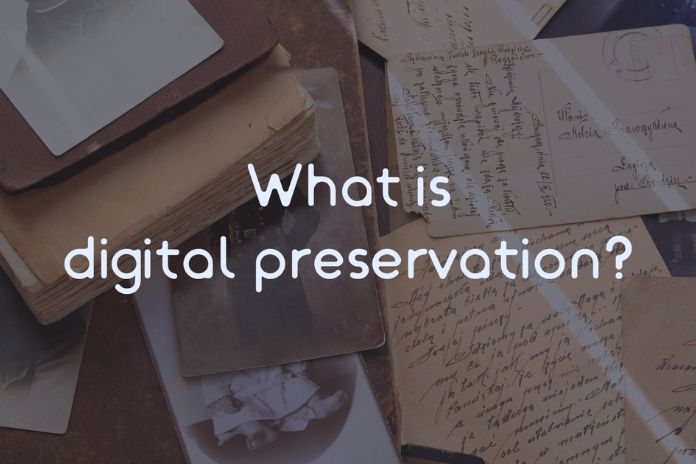Digitalization and public administration processes have also led to the digital preservation of tax documents with notable advantages, both for businesses and professionals in terms of time and costs and for the PA itself, which can carry out checks more quickly. Let’s see what it consists of and which documents are allowed.
What Is Digital Preservation?
Digital preservation is the process that allows the archiving and preservation of administrative documents in digital format. In fact, it replaces the paper format and will enable archives of documents and computer data to be protected and preserved over time.
The introduction of this system represents a necessary evolution to adapt to the current digitization process, with the possibility of saving a copy of a document in a dematerialized archive. Documents, accounting records, correspondence, and any deed or data, both for fiscal and civil purposes, can only be stored digitally, eliminating the printing and paper storage of such documents.
What Are The Requirements For Digital Preservation?
The guidelines dictated by the Italian Agency for Digitization (AGID) define the characteristics that the digital document preservation process must guarantee, namely:
- Authenticity and integrity to ensure that the document has not undergone alterations or modifications;
- Reliability, also through the addition of the digital signature of the person responsible for conservation and the time stamp on the document once the conservation process has been completed,
- Readability: to ensure that the document can be read at any time;
- Availability, i.e., the possibility of being able to access and obtain the paper,
What Types Of Documents Can Be Stored Digitally?
The dematerialization process concerns digital documents, i.e., those defined as “the computer representation of legally relevant documents, facts, or data.” Therefore, it includes a considerable quantity of documents. In general, the following are suitable for digital preservation:
- the accounting records, which include the VAT registers, the register of depreciable assets, the journal and the inventory book, and the tax declarations such as the Income Forms 730 and 770;
- the F24 and F23 payment models;
- the company books and the financial statements (balance sheet, income statement, and explanatory notes).
- Active and passive invoices both to private individuals and to the PA, receipts, and accounting documents.
What Formats Are Allowed?
To ensure compliance with the requirements, documents suitable for digital preservation must be produced in the following format:
- PDF, DOC, XLS, HTML, and PDF/A formats are allowed for texts and documents;
- JPG, GIF, etc. for images;
- MPG, MPEG, AVI, and MP3; WAV for video and audio MPEG, MPEG, AVI, and MP3; WAV;
- For compressed ZIP or RAR files,
- The XML format and Office Open XML
- TXT;
- for SMTP and MIME email.
How Are Invoices Digitally Preserved?
To be able to store invoices or any other fiscal document digitally, you need to:
- send the documents to the storage system (the so-called PdV payment packets);
- The storage system checks the contents of the payment packets, and if this is considered consistent with the provisions of the storage manual, it accepts them; otherwise, it rejects them.
- If received, a payment report is generated with a possible digital signature.
- The system proceeds to create the index of the archiving package (IPdA) according to the SInCRO standard with the addition of the digital signature (FD) of the person responsible for storage and the timestamp (MT);
- The archiving package (PdA) containing the objects to be stored, including the IPdAM, is ready to be held on unique storage systems for the years required by the relevant legislation.
- In cases of exhibition, the user will have to access the preservation system to extract the distribution package (PdD).
What Are The Advantages Of Digital Preservation?
The digital preservation of documents will allow businesses and professionals to obtain a series of advantages typical of an electronic archive, such as more incredible speed in searching for a copy, saving time and printing costs, and reducing the risk of losing paper documents. But also the saving of space dedicated to storage.
What Are The Deadlines For Digital Preservation?
The process of conserving tax documents, including electronic invoices issued and received, must be carried out within the deadline set by article 7, paragraph 4-ter, Legislative Decree no. 357/94, or in the three months following the deadline for submitting the annual declarations (see Resolution no. 9/E of January 29, 2018).
Stamp Duty On Electronic Documents
In the case of digital preservation, the stamp duty on IT documents relevant for tax purposes, such as electronic invoices, accounting records, and other documents, is paid by F24 to be made within 120 days of the end of the financial year. With regard to accounting records, such as journals and inventories, kept mechanically and digitally preserved, stamp duty is due for every 2,500 forms or fractions thereof.
Who Provides The Service?
Control over the digitization system lies with the Italian Agency for the Digital, AGID, which is also responsible for accepting applications for accreditation from public or private entities that intend to offer digital preservation services. In fact, in order to carry out the digital preservation service, it is necessary to obtain authorization and satisfy specific requirements, both qualitative and legal.
Also Read: Five Tips For Implementing Digital Transformation In Companies

